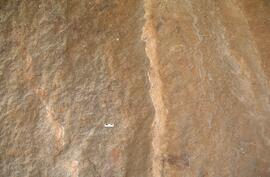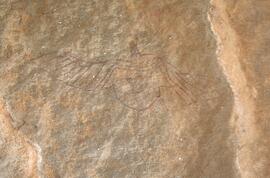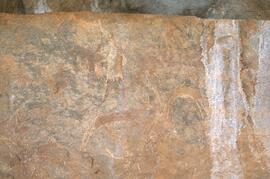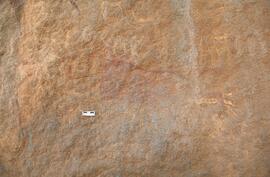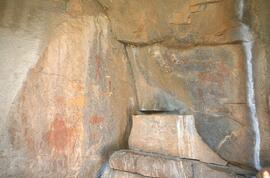Hot Fire I
127 Images & Collections results for Hot Fire I
127 results directly related
Exclude narrower terms
ZA NASMUS NASMUS-NASMUS-RSA-HOF1-23.jpg
·
Item
·
09/10/2001
Part of National Museum
Rhebuck is one of the antelope that are most frequently depicted, after the eland. The rhebuck is comparable to the eland because it is often painted in shaded polychrome. Both eland and rhebuck are depicted in two colours, mainly red and white, even though they are more grey than red. Depictions of men with rhebuck heads are shamans. It is known that shamans with rhebuck heads controlled eland and harnessed their power to enter trance and to perform their various tasks, including rain-making. Hot Fire I
ZA NASMUS NASMUS-NASMUS-RSA-HOF1-28.jpg
·
Item
·
09/10/2001
Part of National Museum
Different kinds of bows are depicted in San art. From curved, comparatively straight and triple curved there are a variety of bows found in rock art.Depiction of arrows, whether they be real or not (arrows of sickness) are quite common in rock art.Arrows of sickness are said to be small, invisible arrows that malevolent shamans shoot into people whom they wish to make ill.
The arrow points were traditionally made of bone and later of iron. Each point is distinctive; hunters recognise their own and others’ arrows. This is important because an animal belongs to the owner of the fatal arrow, and that person has the responsibility of distributing the meat equitably amongst all the people in the camp.The poison for which the San are known is placed behind the point so as not to blunt it. The poison was made from snake venom, certain plants and beetle larvae. There is no known antidote, and the San are extremely careful indeed to avoid it getting into their eyes and skin. Men carry their arrows in quivers. Hot Fire I
